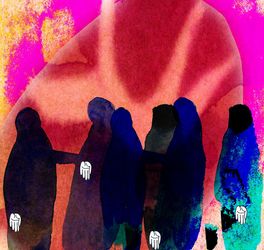When the Bharat Jodo Yatra climaxed at Lal Chowk, Srinagar, with Rahul Gandhi raising the national flag at this historic spot, I remarked to some newspersons who had gathered around me that this was the “inflexion point” at which a moral crusade would turn into a political campaign. Having roused the conscience of the nation against the hatred being spewed, and having galvanised the party through the length of the country, the moment had arrived when our thoughts would have to seriously turn to defeating the source of the divisiveness that has overtaken us as a people. That opportunity would come at the general elections scheduled for a year hence.
By the time this column is in your hands, a giant step towards that end would have been taken at the plenary session of the All India Congress Committee in Raipur over the weekend of February 25-26. This is being written in anticipation of that event. What must the Congress do now to politically capitalise on Rahul Gandhi’s long march?
The agenda would be complex, and there are many issues to tackle. But attention would be focused on the grand strategy for the general elections. Would the Congress be going it alone as the only party in the opposition with a national presence? Or will it do so in alliance with only those regional parties who concede in advance the premier position to the Congress? Or taking on board all regional parties in recognition of their regional hold while leaving it till after the elections to determine who will lead the coalition government if the grand alliance prevails at the polls?
I think the party should hark back to the Chintan Shivir at Pachmarhi in 1998 where the consensus was that the Congress should go it alone. Then the Congress mind should turn to how events actually played out. After reverses in 1999, the Congress started seeing merit in allying with at least some regional parties to take on the formidable Atal Bihari Vajpayee in 2004. Vajpayee, for his part, was so convinced of his invincibility that he brought forward the 2004 elections by almost six months. As we now know, that proved to be misplaced confidence, and, instead of the BJP, it was the United Progressive Alliance (UPA) that took the reins of government for 10 long years.
What is often forgotten is that the UPA did not exist before the elections. The UPA coalition was put together and named as such after the results were out, not before. Who would be prime minister was also determined after, and not before, the election outcome. Later, when the Left parties baulked at Dr Manmohan Singh’s civil nuclear cooperation deal with the US and the Samajwadi Party stepped into the breach to secure parliamentary endorsement of the agreement, SP became part of the UPA.
It is this history that suggests itself as the answer for 2024. The Congress on its own cannot take on the saffron forces. But it need not be on its own. Most meaningful opposition parties, including Akhilesh Yadav and Nitish Kumar in the two most populous states of the Union, are as dedicated to the principle of ridding India of the last decade of hindutva rule as any Congressman or woman. Therefore, it would be advisable for the Congress to “stoop to conquer” by not asserting its primacy as a national party so as to facilitate a gravitation towards a mahagathbandhan. The election results would then show, as they did in 2004, which of the parties of the alliance has how many seats. And, accordingly, the question of leadership can be evolved by consensus.
Aiyar is a former Union minister and social commentator.


